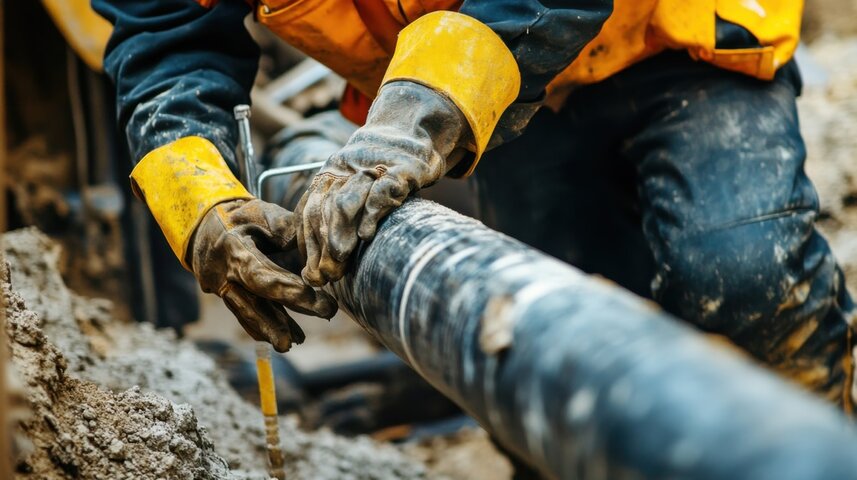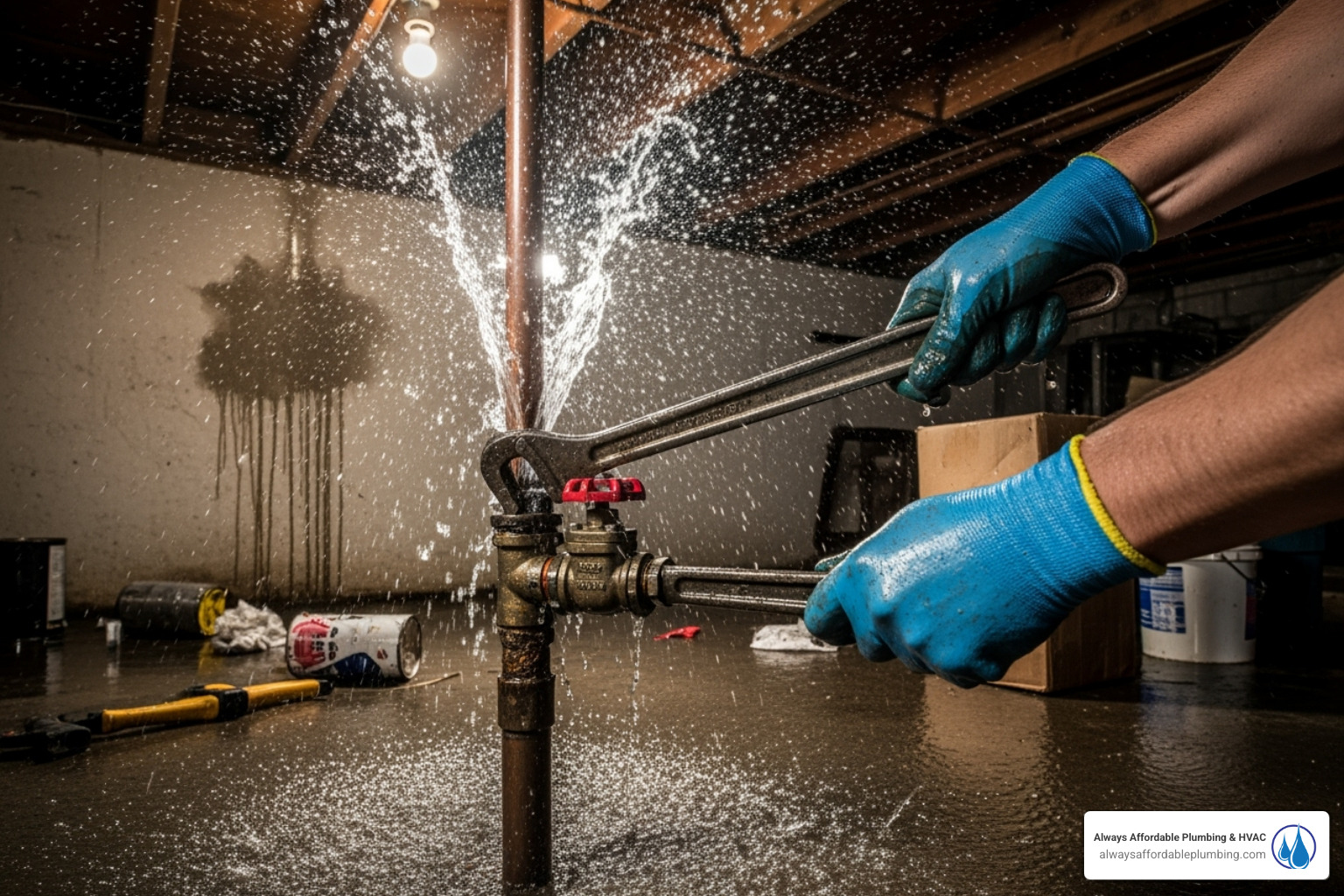
Common Signs You Need Main Sewer Line Service
Your home's main sewer line is the unsung hero of your plumbing system, responsible for carrying all wastewater away from your property to the municipal sewer system or septic tank. When it's not working correctly, the signs are often unmistakable and unpleasant. Recognizing these early warning signals can save you from significant headaches and costly repairs down the line.
- Multiple Clogged Drains: One clogged drain might be a localized issue, but if you have several drains backing up simultaneously – particularly in different areas of your home like a toilet, shower, and sink – it's a strong indicator that the problem lies in your main sewer line.
- Toilets Gurgling When Drains Run: If flushing a toilet causes gurgling noises in other drains (like the shower or sink), or vice versa, it means air is trapped in the drain system, often due to a main sewer line blockage.
- Water Backing Up in Unusual Places: A common scenario is when you flush a toilet and water backs up into your shower or bathtub. This is a classic sign of a main sewer line obstruction preventing wastewater from flowing freely.
- Unpleasant Odors: Foul, sewage-like odors emanating from drains or around your yard, especially near the sewer line's path, signal that wastewater is not draining properly and gases are escaping.
- Soggy Spots or Indentations in Your Yard: If there are unexplained wet, marshy areas or depressions in your lawn, particularly near where your main sewer line runs, it could indicate a break or leak in the pipe, allowing wastewater to seep into the soil.
- Pest Infestations: An increase in rodents or insects in your home or yard can sometimes be linked to a damaged sewer line, as they exploit cracks and openings for access to water and shelter.
If you're noticing any of these signs, don't delay. A compromised main sewer line can quickly escalate from an inconvenience to a major health hazard and property damage event. Always Affordable Plumbing is equipped to diagnose and address these critical issues promptly.
Why Sacramento Area Homes Experience This More Often
Understanding these local factors helps explain why this particular service is so crucial for homeowners here.
- Aggressive Tree Roots: Sacramento is known for its lush, mature trees, from stately oaks to water-seeking willows and sycamores. Tree roots are incredibly persistent and are drawn to the moisture and nutrients found within sewer pipes. They can infiltrate even the tiniest crack or loose joint, growing inside the pipe, causing blockages, and eventually cracking or crushing the line.
- Clay Soil Conditions: The predominant clay soil in much of the Sacramento region presents its own set of challenges. Clay soil expands significantly when wet and shrinks when dry. This constant shifting and settling can put immense pressure on underground pipes, leading to cracks, dislodgements, or even complete pipe collapse over time.
- Aging Infrastructure: Many homes in Sacramento, especially in older, established neighborhoods, were built decades ago. Their original sewer lines, often made of materials like cast iron or clay (VCP), have a finite lifespan. These older pipes are more susceptible to corrosion, cracks, root intrusion, and general deterioration compared to modern PVC pipes.
- Hard Water Buildup: While not a direct cause of breaks, the mineral content in Sacramento's hard water can contribute to scale buildup inside pipes over many years, reducing their internal diameter and making them more prone to blockages when combined with grease and other debris.
- Delta Breeze Effects: The dry summers followed by wet winters, along with the Delta breeze, can create cycles of soil moisture fluctuation that stress underground plumbing.
These local conditions mean that main sewer line issues aren't just random occurrences; they're often a direct consequence of our environment. Proactive inspections and timely repairs by Always Affordable Plumbing are essential for maintaining a healthy plumbing system in the Sacramento area.
What Happens If You Ignore the Problem
Ignoring problems with your main sewer line is akin to ignoring a persistent check engine light in your car – eventually, something far worse and more expensive is going to happen. The consequences of neglecting a failing main sewer line can range from merely annoying to truly catastrophic, impacting your home, your health, and your finances.
- Extensive Water Damage: A completely blocked or broken main sewer line can lead to sewage backing up into your home. This can occur in multiple drains, toilets, showers, or even through floor drains. Sewage water is not only destructive to floors, walls, and furniture but is also a biohazard, requiring professional cleanup and sanitization.
- Structural Damage: Continuous leaks from a broken sewer line can saturate the soil around your home's foundation. This can lead to foundation shifting, cracks in walls, and other serious structural issues that are incredibly costly to repair.
- Health Hazards: Sewage contains harmful bacteria, viruses, and parasites. Exposure to these pathogens can cause severe illnesses. The foul odors are also a sign of dangerous sewer gases, including methane and hydrogen sulfide, which can be toxic and flammable in high concentrations.
- Yard Damage: Constant sewage leaks will create foul-smelling, boggy spots in your yard, killing grass and plants. This makes your outdoor space unusable and creates an unsightly mess.
- Increased Repair Costs: A small crack or minor root intrusion, if caught early, might be repairable with less invasive methods. However, if ignored, these issues will invariably worsen, potentially leading to a complete collapse of the pipe, requiring extensive excavation and full line replacement – a significantly more expensive and disruptive process.
- Decreased Property Value: A history of major sewage backups or an unresolved sewer line problem can deter potential buyers and significantly reduce your home's market value.
The message is clear: do not ignore main sewer line issues. Timely intervention is crucial to prevent these escalating problems. Always Affordable Plumbing specializes in efficient and effective solutions to protect your Sacramento home.
Seasonal Considerations for Local Residents
Living in the Sacramento area means experiencing distinct seasonal changes, and these fluctuations can have a significant impact on your main sewer line. Understanding these seasonal risks can help local residents be more proactive about plumbing maintenance.
- Summer (Hot and Dry): Sacramento summers are notoriously hot and dry. This extreme heat can cause the clay soil around your pipes to dry out and shrink significantly. This ground movement puts stress on underground sewer lines, increasing the risk of cracks, shifts, and dislodged joints. Additionally, with increased water usage (watering lawns, longer showers), any existing small blockages can become more pronounced as the system is pushed to its limits.
- Fall (Leaves and Roots): As temperatures cool and trees prepare for winter, fall brings a deluge of falling leaves. While not directly entering the sewer line, abundant organic material can clog storm drains, and more importantly, trees are still actively seeking moisture before winter. This makes late fall a prime time for aggressive root growth into any existing pipe vulnerabilities as they search for water.
- Winter (Wet and Cold): Sacramento winters are characterized by more rainfall. This increased moisture causes the clay soil to expand. The constant cycle of expansion and contraction from dry summers to wet winters is a major contributor to pipe stress and damage over time. Heavier rain can also exacerbate existing cracks or breaks in sewer lines, allowing more water to infiltrate and potentially cause backups or further erosion around the pipe.
- Spring (Growth Spurt): Spring sees a resurgence of plant growth, and tree roots are no exception. As trees come out of dormancy, their root systems become highly active, seeking water and nutrients. This makes spring a peak season for root intrusion into sewer lines that may have developed minor cracks or loose joints during the winter months.
Due to these distinct seasonal pressures, regular sewer line inspections, especially for older homes or properties with mature trees, are a wise investment for Sacramento area residents. Proactive maintenance by Always Affordable Plumbing can help you avoid major disruptions during any season.
Frequently Asked Questions
What is a main sewer line?
The main sewer line is the primary pipe that collects all wastewater from your home's various drains (toilets, sinks, showers, laundry) and transports it out of your property to the municipal sewer system or your septic tank.
How do I know if my main sewer line is blocked or damaged?
Common signs include multiple drains backing up simultaneously, toilets gurgling when other drains are used, sewage odors, soggy spots in your yard, or water backing up in unusual places like a shower after flushing a toilet.
What causes main sewer line problems in Sacramento?
In Sacramento, common causes include aggressive tree root intrusion, shifting clay soil due to seasonal expansion and contraction, the age and material of older pipes (cast iron, clay), and accumulation of grease and debris.
Can I fix a main sewer line problem myself?
Main sewer line issues are complex and often require specialized equipment like sewer cameras and hydro-jetting machines, as well as permits for excavation. DIY attempts can cause further damage or pose health risks. It's best to call a professional like Always Affordable Plumbing.
What is a sewer camera inspection?
A sewer camera inspection involves inserting a small, high-resolution camera into your sewer line to visually assess its condition. This helps pinpoint the exact location and nature of any blockages, cracks, or damage without extensive digging.
What is hydro-jetting?
Hydro-jetting is a powerful drain cleaning method that uses high-pressure water streams to blast away stubborn blockages, grease buildup, tree roots, and other debris from inside your sewer pipes, leaving them thoroughly clean.
What are trenchless sewer repair methods?
Trenchless methods like pipe relining and pipe bursting allow for sewer line repair or replacement with minimal excavation. They require only small access points, preserving your landscaping and significantly reducing disruption compared to traditional digging.
How long does a main sewer line repair take?
The duration varies. A simple blockage cleared by hydro-jetting might take a few hours. Trenchless repairs can take 1-3 days. Traditional excavation and replacement can take 3-7 days or more, depending on the severity and complexity.
Is a main sewer line repair covered by homeowner's insurance?
It depends on your policy and the cause of the damage. Sudden, accidental damage may be covered, but issues arising from normal wear and tear or neglect typically are not. It's always best to check with your insurance provider.
How can I prevent main sewer line problems?
Regular professional inspections (especially if you have older pipes or mature trees), avoiding flushing non-biodegradable items, properly disposing of grease, and being mindful of landscaping around your sewer line can help prevent issues. Always Affordable Plumbing can also provide preventative maintenance tips.
What is the typical lifespan of a main sewer line?
The lifespan depends heavily on the material. Clay pipes can last 50-60 years, cast iron 75-100 years (though corrosion is a factor), and modern PVC pipes can last 100 years or more under ideal conditions.
Why choose Always Affordable Plumbing for main sewer line service in Sacramento?
Always Affordable Plumbing has a proven track record of expertise in handling the specific challenges of Sacramento's plumbing systems. We use advanced diagnostics, offer transparent solutions, and ensure high-quality, lasting repairs with minimal disruption.
Other Blogs
Customer Testimonials
See what our satisfied customers have to say about their experience with Always Affordable
Plumbing & HVAC.
Latest Blog Posts


Stop the Leaks: Top Duct Repair in Citrus Heights






